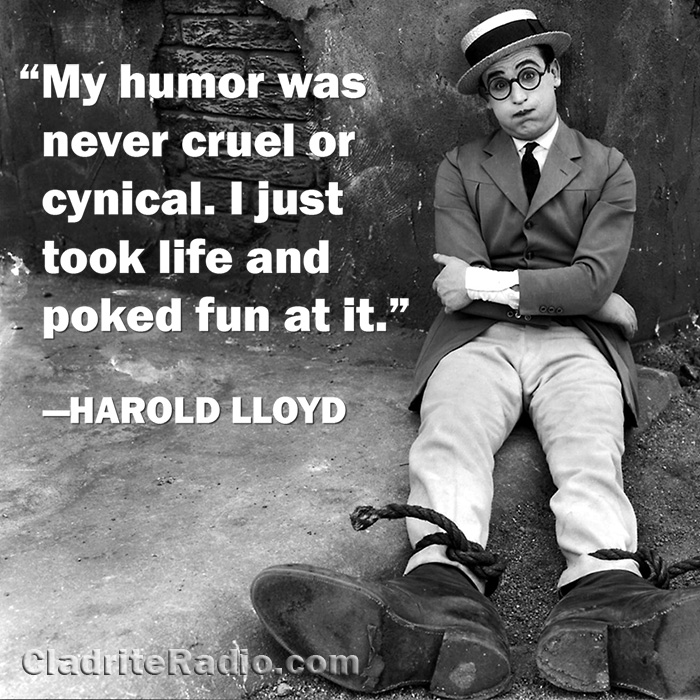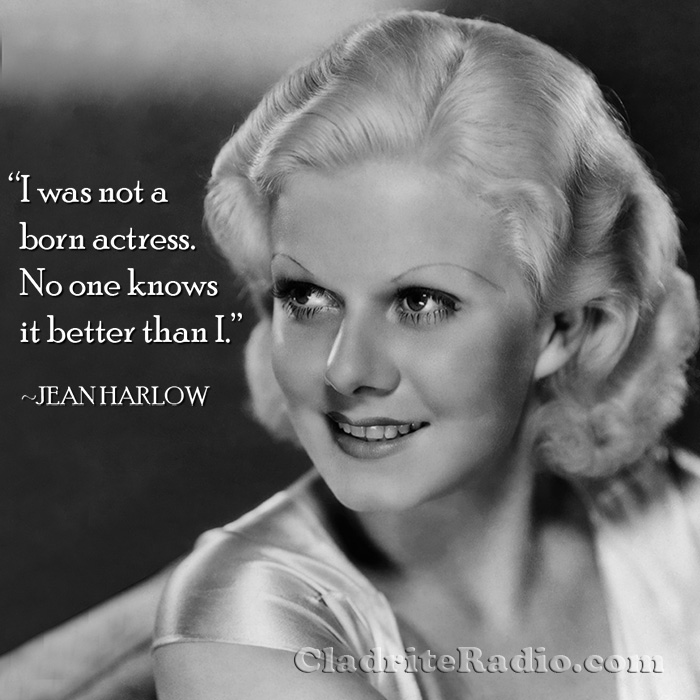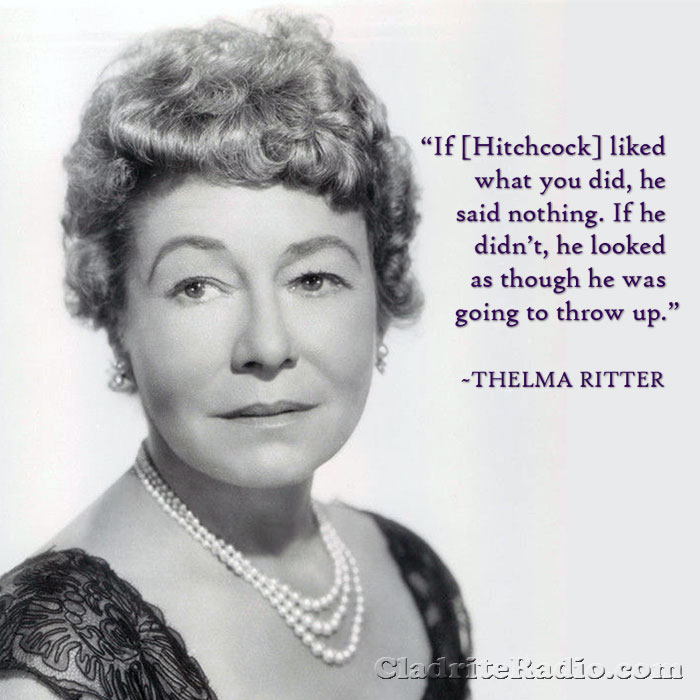Here are 10 things you should know about actor Reginald Denny, born 130 years ago today. He transitioned successfully from leading man status in the silent era to character roles as talkies took over.
Tag: Marilyn Monroe
Happy 124th Birthday, Harold Lloyd!
Comedy giant Harold Lloyd was born 124 years ago today in Burchard, Nebraska. Here are 10 HL Did-You-Knows:
- Lloyd’s parents fought frequently when he was a child (due in large part to his father’s penchant for launching unsuccessful, short-lived businesses); they divorced when he was a teenager, after which Lloyd and his dad moved west to San Diego. In 1912, Lloyd, who’d acted on stage since childhood, began to work in one-reel comedies for the Thomas Edison company. His first role was a Yaqui Indian in short called The Old Monk’s Tale.
- Before long, Lloyd moved to Los Angeles, where he became friends with aspiring filmmaker Hal Roach. Roach told Lloyd that when he was able to produce his own pictures, he’d make a star out of Lloyd. When Roach opened his studio in 1913, the pair began to collaborate on creating Lloyd’s first recurring role, Lonesome Luke, a character influenced greatly by Charlie Chaplin‘s Tramp.
- Within a few years, Lloyd began to shift toward the character that is better remembered today, often referred to as the “Glass character” for the round specs that he wore. “When I adopted the glasses,” Lloyd said in a 1962 television interview, “it more or less put me in a different category because I became a human being. He was a kid that you would meet next door, across the street, but at the same time I could still do all the crazy things that we did before, but you believed them. They were natural and the romance could be believable.”
- In his Lonely Luke days, Harold Lloyd gave actress Bebe Daniels his start. The credits usually listed Lloyd’s character as “The Boy” and Daniels’ as “The Girl.” The pair were romantically involved for a time. After five years, Daniels went on to a very successful career as a leading lady. Daniels’ replacement in Lloyd’s pictures was Mildred Davis, whom he wed in 1923. They were married until her death in 1969.
- In 1919, while shooting some publicity photographs, Lloyd suffered extensive damage to his hand while lighting a cigarette with a prop bomb that he thought was just a smoke pot. The bomb exploded, and Lloyd lost his thumb and forefinger. He also suffered burns on his face and incurred damage to one of his eyes (luckily, his sight was unaffected).
- Lloyd and Roach began focusing on feature-length pictures, rather than shorts, in 1921, and when the pair parted ways in 1924, Lloyd launched his own production company.
- Though Buster Keaton and Chaplin are today considered the greatest comedians of the silent era, in the 1920s, Lloyd’s pictures made more money than either (in large part because he was so prolific—he made 12 full-length features in that decades to Chaplin’s four).
- In the late 1920s, Lloyd built a home in Beverly Hills he called Green Acres that boasted 44 rooms, 26 bathrooms, 12 fountains, 12 gardens, and a nine-hole golf course. Though the surrounding grounds have been subdivided, the main house and the estate’s principal gardens are still there, and the estate is listed on the National Register of Historic Places.
- It’s been reported that Lloyd was approached to portray Elwood P. Dowd in the original Broadway production of Mary Chase’s play, Harvey. When Lloyd turned the part down, the role went to Frank Fay.
- Lloyd’s post-cinema hobby was 3-D photography; among his works were portraits of Hollywood stars such as Marilyn Monroe, John Wayne, Sterling Holloway, Richard Burton and Roy Rogers. He also shot a good many nude…er, artistic photographs of more anonymous starlets of the day.
Happy birthday, Harold Lloyd, wherever you may be!

Happy 106th Birthday, Jean Harlow!
Jean Harlow, the original Blonde Bombshell, was born Harlean Harlow Carpenter 106 years ago today in Kansas City, Missouri. Here are 10 JH Did-You-Knows:
- Harlow, the daughter of a dentist and his wife, left home at 16 to marry Charles McGrew, a businessman seven years her senior. The pair moved to Los Angeles, where Harlow was soon garnering assignments as an extra in pictures.
- Her marriage to McGrew ended after just two years, allowing Harlow to focus on her career. She soon graduated from extra work to bit parts in features and shorts.
- Harlow’s big break came in 1930 when she was cast in Howard Hughes‘ World War I epic, Hell’s Angels. The picture’s premiere at Grauman’s Chinese Theatre in Hollywood was reported to have drawn a crowd of 50,000 people.
- Hughes sold Harlow’s contract to MGM, where her star continued to ascend. Her work in Frank Capra‘s Platinum Blonde (1931) was very well received, and the following year she was paired with Clark Gable in John Ford‘s Red Dust, the second of six pictures she and Gable would appear in together during her short career.
- Harlow is said to have turned down lead role in Freaks (1932) and King Kong (1933).
- Harlow served as godmother to Millicent Siegel, the daughter of gangster Benjamin “Bugsy” Siegel. She also dated mobster Abner “Longie” Zwillman, who advanced her career by loaning Harry Cohn, the head of Columbia Pictures, $500,000.
- In 1935, Harlow demanded more money from MGM, refusing to work until they assented, and while she was on strike, she wrote a novel, Today Is Tonight. It wasn’t published until 1965, early thirty years after her death.
- Both Harlow and Marilyn Monroe starred opposite Gable in their final pictures—Harlow in Saratoga (1937) and Monroe in The Misfits (1961). Monroe idolized Harlow and refused the chance to play her in a biopic because she felt the script was not respectful to Harlow.
- At the time of her death, Harlow was engaged to actor William Powell (and had been for two years). Had the pair married, Powell would have been Harlow’s fourth husband.
- Though rumors long persisted that her mother, a Christian Scientist, refused medical care for her daughter, or that Harlow died of alcohol abuse, sunstroke, poisoning due to her platinum hair dye or any of a number of other causes, Harlow’s passing, at the young age of 26, came as a result of kidney failure.
Happy birthday, Jean Harlow, wherever you may be!

Happy 115th Birthday, Thelma Ritter!
The inimitable Thelma Ritter was born 115 years ago today in Brooklyn (natch), New York. She was a spectacular character actress, bringing a touch of magic to everything she appeared in with her portrayals of a very particular type of world-weary, wise and wisecracking New Yorker. Here are 10 TR Did-You-Knows:
- Ritter began acting at an early age, appearing in high productions and stock theatre in the New York area before studying at the American Academy of Dramatic Arts.
- Ritter found work on the stage in her early years, but took a hiatus from acting to raise her two children with former actor and advertising executive Joseph Moran. Ritter and Moran were married for 42 years until her death in 1969.
- When money was tight early in their marriage, Ritter and Moran made a practice of entering the advertising slogan and jingle contests that were so prevalent at the time.
- Once her children were of age, Ritter returned to stock theatre and also found work in radio, but it was her first motion picture role, a small part as a harried shopper in Miracle on 34th Street (1947), that sparked her ascent as an actress. She was 45 years old.
- From 1953-1961, Ritter was nominated six times for the Best Supporting Actress Oscar without ever winning. Deborah Kerr was also nominated six times, but for Best Actress, and Glenn Close has been nominated three times each in those two categories. Like Ritter, Kerr never won an Oscar, and Close, too, has come up empty so far.
- Four of Ritter’s Oscar nominations came in consecutive years—1950-53—a feat achieved by just four other actors: Jennifer Jones (1943-1946), Marlon Brando (1951-1954), Elizabeth Taylor (1957-1960) and Al Pacino (1972-1975).
- Ritter did win a Tony in 1958 in the Best Actress (Musical) category for her work in the show New Girl in Town. She tied for the award with her costar, Gwen Verdon.
- Though she was fourth-billed in Alfred Hitchcock‘s Rear Window, under James Stewart, Grace Kelly and Wendell Corey, Ritter received the highest salary of any member of that picture’s cast: $25,694.
- In addition to her work in the theatre, in picture and in radio, Ritter was active on television in the 1950s and early ’60s, on such programs as Alfred Hitchcock Presents, General Electric Theater, and The United States Steel Hour.
- Director George Seaton helmed both Ritter’s first movie, the aforementioned Miracle on 34th Street, and her last, What’s So Bad About Feeling Good? (1968).
Happy birthday, Thelma Ritter, wherever you may be!

Direct(orial) mail
 It’s the first day of issue for a set of four postal stamps honoring a quartet of great (native or naturalized) American motion picture directors, and we can’t argue with the selection of a single one of them. Here’s what the USPS has to say about the occasion:
It’s the first day of issue for a set of four postal stamps honoring a quartet of great (native or naturalized) American motion picture directors, and we can’t argue with the selection of a single one of them. Here’s what the USPS has to say about the occasion:
These Great Film Directors (Forever®) stamps honor four great filmmakers who captured the many varieties of the American experience. Frank Capra, John Ford, John Huston, and Billy Wilder created some of the most iconic scenes in American cinema. They gave audiences an unforgettable (and in some cases, deeply personal) vision of life.
These four filmmakers received multiple Academy Award nominations, 15 Oscars, and numerous other honors during their lifetimes. But their greatest accomplishment lies in the vitality and artistry of the stories they told through film. The stamp art combines a portrait of each man with a scene from one of his most iconic works.
The background art for the stamp honoring Frank Capra shows a scene from It Happened One Night, a comedy in which a runaway heiress (played by Claudette Colbert) and a reporter (Clark Gable) compare their hitchhiking skills.
For the John Ford stamp, the background recalls a scene from The Searchers, an influential Western starring John Wayne and making Ford’s characteristic use of the American landscape.
The Maltese Falcon inspired the background art for the John Huston stamp. In this classic mystery, gumshoe Sam Spade (Humphrey Bogart) goes up against various unscrupulous characters (among them Mary Astor, Peter Lorre, and Sydney Greenstreet).
And for Billy Wilder, the background artwork was inspired by Some Like It Hot, a farce about two male musicians (Jack Lemmon and Tony Curtis) who seek refuge from gangsters by posing as members of an all-girl band featuring luscious singer Sugar Kane (Marilyn Monroe).
Art Director Derry Noyes designed these stamps using art by award-winning illustrator Gary Kelley, who created the images using pastels on paper.
You can purchase these stamps, along with First Day of Issue color postmarked envelopes and other related items, here.
